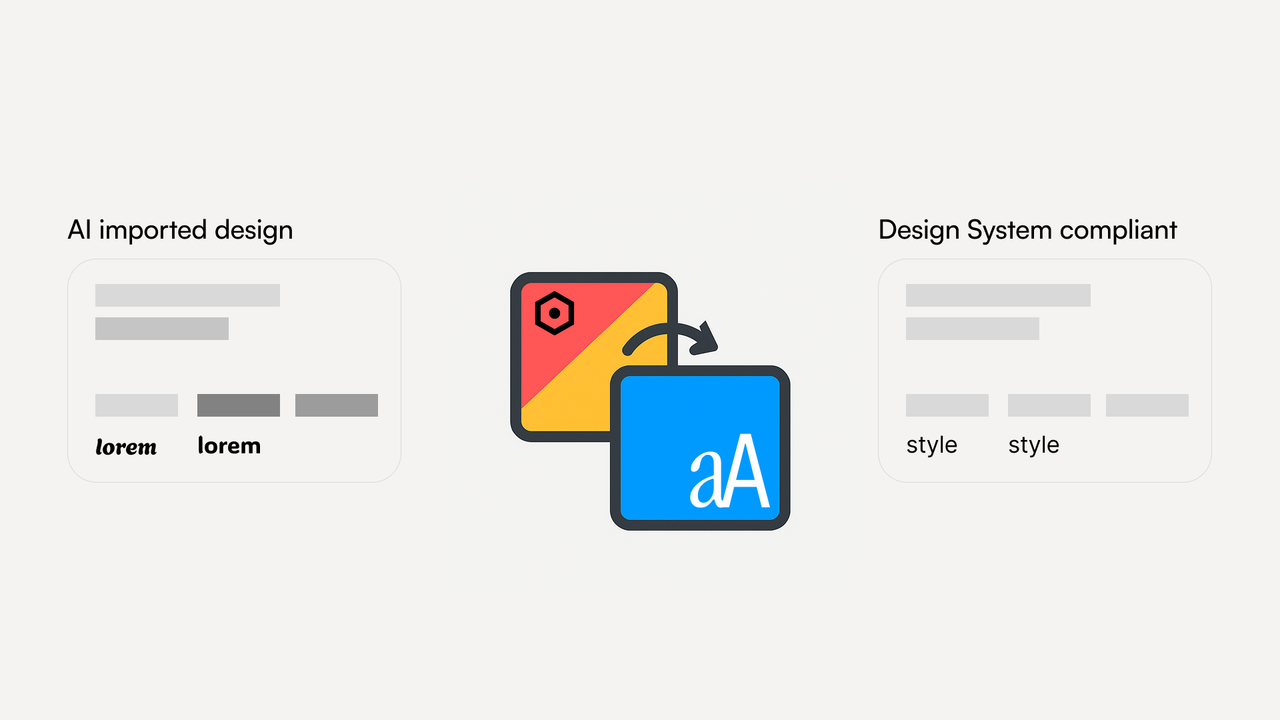Role
AI native Product Designer
June 2025- July 2025
FlytBase, Pune.
Worked with PMs, engineers, CEO
Methods
AI, Vibe Coding / Journey mapping / Prompt Engineering / UX Research / Prototyping /
Challenge
My task was to optimize the internal design process. Design interactions for dockless operations and RC control. Make AI@FlytBase website.
Through out the internship I worked on multiple projects, and the following is a compilation of all of them. Why not only have any one? Because the general theme grouping them is AI and I want to share all of them :)
You can view any mini project or scroll to view all
#1 Figma Plugin
When I joined the team, I was tasked with rethinking the design process from first principles to optimize it. The goal was to allow designers to focus more on interactions and user behavior rather than repetitive production work.

The team had already integrated AI to generate quick design iterations and show all states to developers. This reduced a lot of manual effort in Figma.
AI-generated designs and code couldn’t be sent directly to developers due to poor code quality.
Design consistency was often broken when moving from AI output to Figma.
Figma remained necessary for handoff and for making small but important adjustments.
At that time, designers were literally taking screenshots of AI-generated designs and then recreating them in Figma with design system. This was slow, repetitive, and frustrating.

I started by looking at how AI design tools export their outputs.
Most of them render frontends in React or HTML and give you a preview or publish link.
These could be imported into Figma using popular HTML-to-Figma plugins.
But the issue was, the designs would come in as they were, without respecting the design system. Colors, spacing, border radii, and typography didn’t map to DS tokens. The UI imports looked fine at first glance, but weren’t actually usable.
Whether you’re importing AI-generated UIs or working with inconsistent layouts, this tool ensures pixel-perfect adherence to your style guide/ design system.
Experience it here
#2.1 Dockless Ops and RC UI
What was happening before
FlytBase primarily focuses on autonomous drones, which are primarily dock drones.
My job was to add support to the software for RC drones, remote controlled drones.


RC drones
Problem
Brief
Transform FlytBase from a docked-drone platform into a unified fleet orchestration system that seamlessly integrates RC-controlled drones alongside autonomous dock operations.
Design
New RC Interface
Web Portal Evolution
View entire design
#2.2 AI detection & Tracking
Brief
Redesign the AI detection and tracking flow for the users,
Competitor analysis (DJI native software)
Map out the missing flows and design states of the interactions
Designing for main view and in fleet view.
Detection + tracking
Payload control
Drone Control
Spectator View
Only detection, with visual, auditory feedback
In-tracking edge cases
Redesign
#3 Generative UI
Experimenting
I strongly believe that interfaces will never be boring again, thanks to Generative UI
Blog
Open in new tab
Generative UI experiment on a Claude artifact
Dump any content into this artifact and see the AI understanding and creating contextual UI for it.
#4
What?
Brief
How
AI Reporting Dashboard
Working Feature Demos
#5 AI@FlytBase Website
What?
Before
After

A dedicated developer used to update the website because of its rigid UX and
Poor CMS usability to non-webflow experts
Google, Notion Doc, any URL
Publish a blog post, website with role based access
Future Scope
Continuing to demand more from AI and diving deep into UX in the age of AI, enhancing understanding of human behavior and user psychology to contribute meaningfully alongside AI till AGI :)
Impact
Challenge
Adapting to a completely new domain, both complex and fun: drones.
Learning to "talk" to AI and boosting efficiency.
Surprise
The more you use AI, your domain value and skill increases because you are no longer just a translation layer but a visionary and manager.
Insight
Discovered and learnt the art of demanding more from AI and pushing efficiency limits.














































